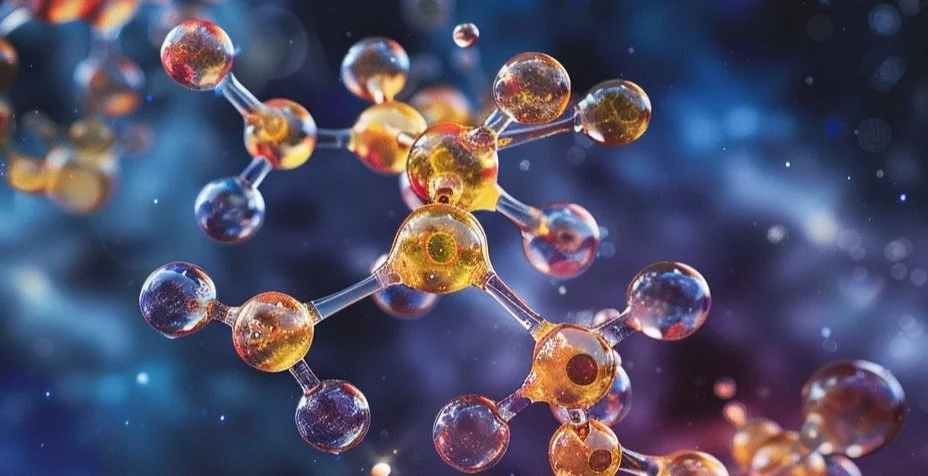Understanding the Endocannabinoid System: The Body's Intricate Balancing Act
The endocannabinoid system (ECS) is a remarkable and intricate system within the human body, playing a crucial role in maintaining homeostasis – the body’s internal balance. Despite its importance, the ECS is relatively unknown outside scientific and medical communities. Let's delve into what the ECS is, how it functions, and its potential implications for health and wellness.
What is the Endocannabinoid System?
The ECS is a complex cell-signaling system identified in the early 1990s while researchers were exploring THC, a well-known cannabinoid in cannabis. The ECS is present in all vertebrates, including humans, and is composed of three core components:
Endocannabinoids: These are naturally occurring lipid-based neurotransmitters. The two primary endocannabinoids are anandamide (AEA) and 2-arachidonoylglycerol (2-AG). Unlike other neurotransmitters, endocannabinoids are synthesized on demand, meaning they are produced when the body signals they are needed rather than being stored for later use.
Receptors: These are found throughout the body and are involved in various physiological processes. The two main types of receptors are CB1 and CB2. CB1 receptors are predominantly located in the central nervous system, including the brain; whereas CB2 receptors are mainly found in the peripheral nervous system, particularly in immune cells.
Enzymes: These break down endocannabinoids once they have carried out their function. The primary enzymes involved are fatty acid amide hydrolase (FAAH), which breaks down AEA, and monoacylglycerol lipase (MAGL), which degrades 2-AG.
How Does the ECS Work?
The ECS is essentially a vast network of receptors, endocannabinoids, and enzymes that communicate with each other to maintain balance within the body. When something in the external environment disrupts homeostasis, the ECS is activated to help the body return to its optimal state.
For instance, if you are injured, the ECS can help regulate the body's response to pain and inflammation. Endocannabinoids bind to CB1 receptors in the brain to reduce the perception of pain, while interaction with CB2 receptors can modulate the immune system's response to inflammation.
The ECS and Health
Research has revealed that the ECS is involved in a wide array of functions and processes, including:
Appetite and digestion
Metabolism
Chronic pain
Inflammation and immune response
Mood and anxiety
Motor control
Learning and memory
Sleep
Cardiovascular system function
Given its broad influence, it’s no surprise that the ECS has become a focal point for research into new therapeutic approaches for various conditions. Dysregulation of the ECS is thought to contribute to numerous health issues, including chronic pain conditions, neurodegenerative diseases, and even psychiatric disorders.
Cannabinoids and the ECS
Cannabinoids, the active compounds in cannabis, interact with the ECS by mimicking endocannabinoids. THC binds primarily to CB1 receptors, which explains its psychoactive effects. Conversely, cannabidiol (CBD) does not bind directly to CB1 or CB2 receptors. Instead, it influences the ECS by preventing the breakdown of endocannabinoids, allowing them to have a more prolonged effect in the body.
This interaction suggests that cannabinoids from cannabis could potentially be used to enhance ECS function and help restore balance in the body. This potential has led to growing interest in medical cannabis as a treatment for various ailments, from chronic pain to anxiety disorders.
The Future of ECS Research
The ECS is still a relatively young field of study, and researchers continue to uncover new aspects of its role in human health. The future holds exciting possibilities for understanding how this system can be harnessed to improve health and treat disease.
As we continue to learn more about the ECS, it’s becoming clear that maintaining its balance is crucial for overall health and well-being. Whether through lifestyle changes, dietary adjustments, or the use of cannabinoids, supporting the ECS could be a key factor in promoting long-term health.
Conclusion
The endocannabinoid system is a vital part of the human body, intricately involved in maintaining homeostasis and regulating numerous physiological processes. As research advances, we can expect to see a growing understanding of how the ECS functions and how it can be leveraged to improve health outcomes. Whether you're exploring medical cannabis or simply interested in the science of wellness, the ECS is a fascinating and essential piece of the puzzle.

